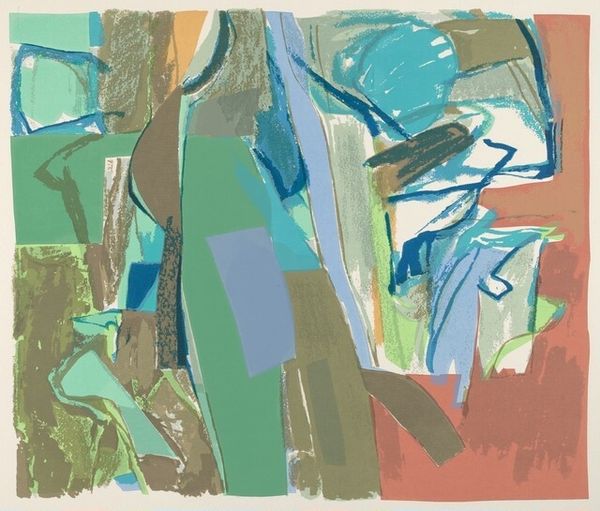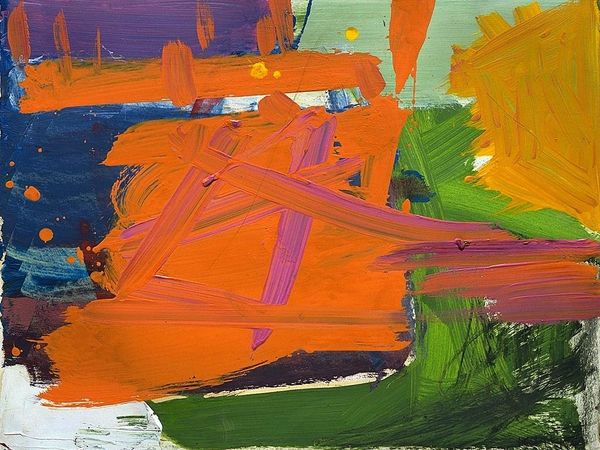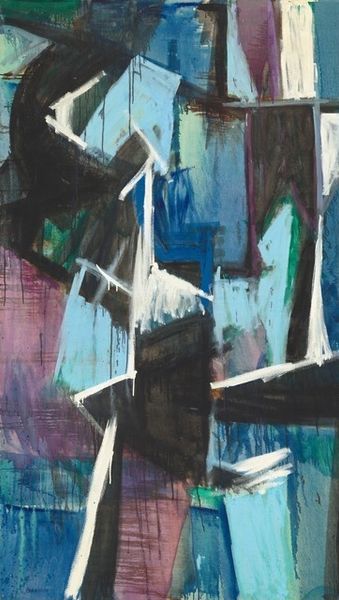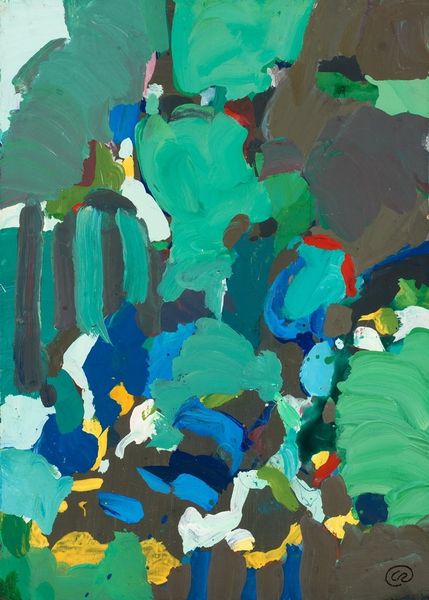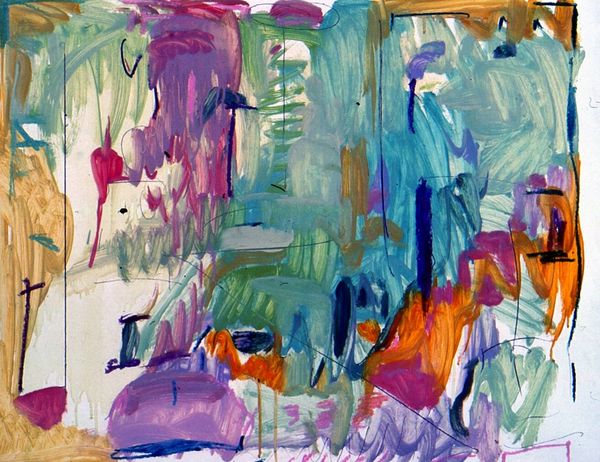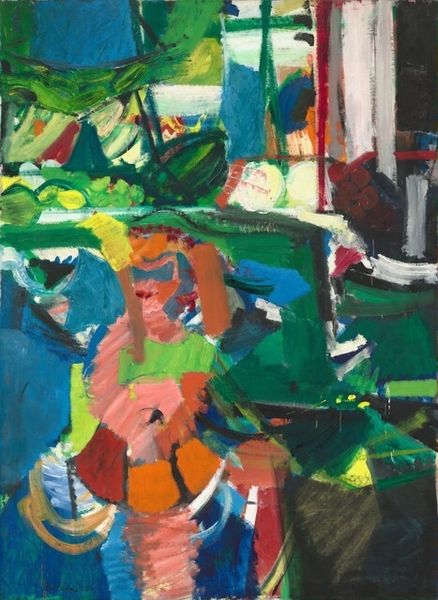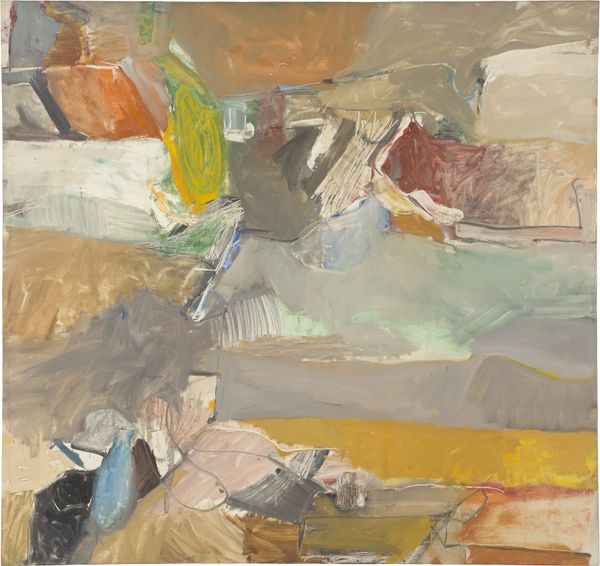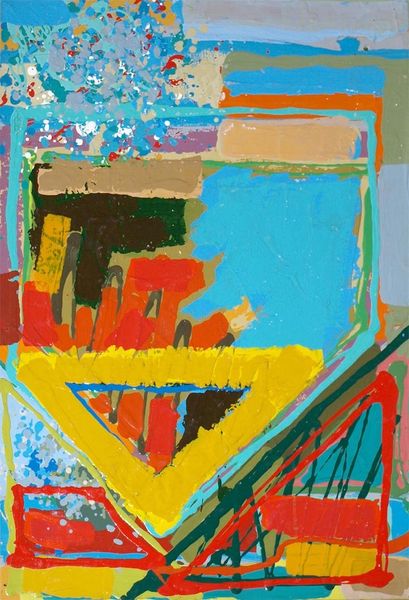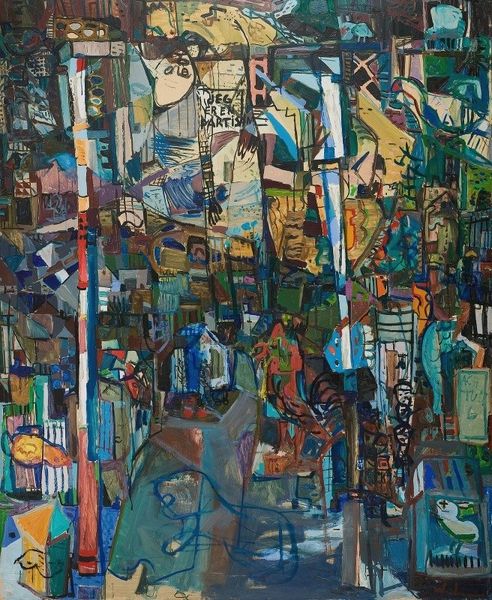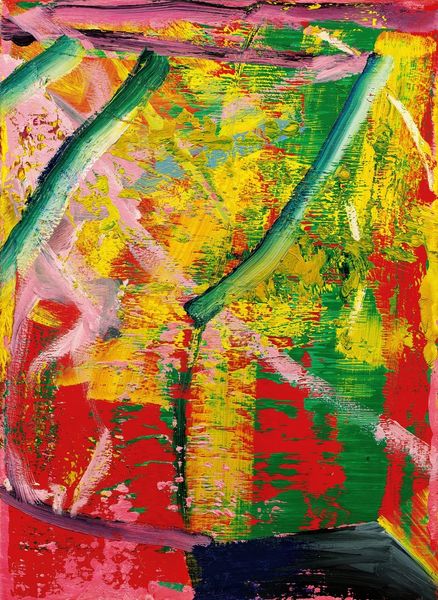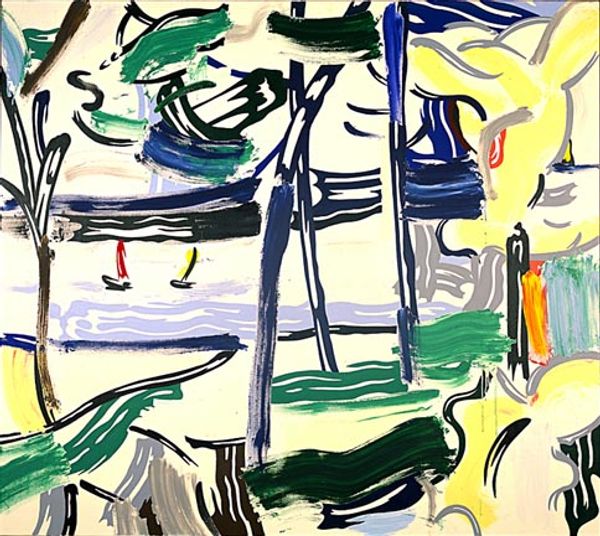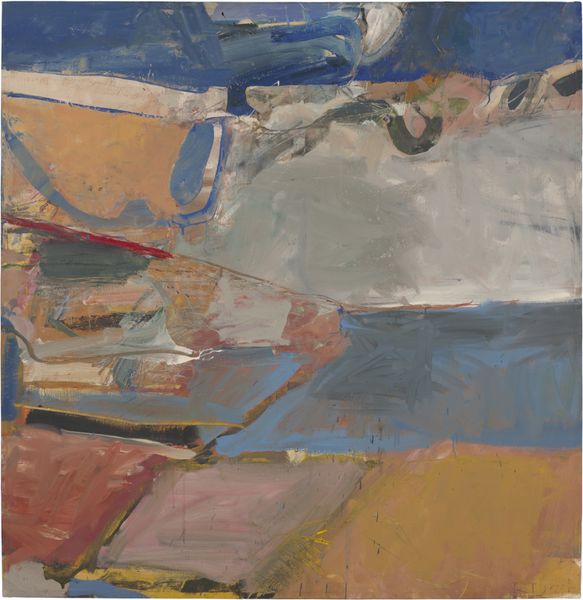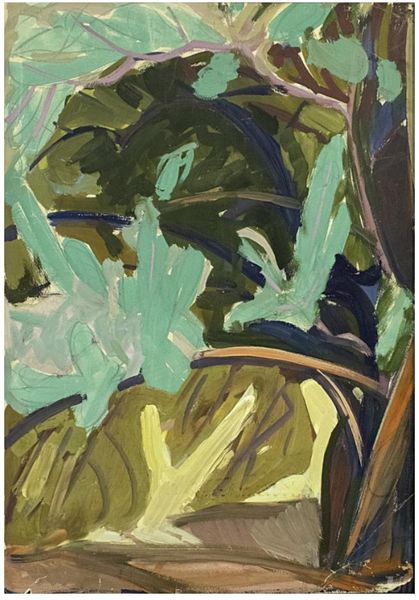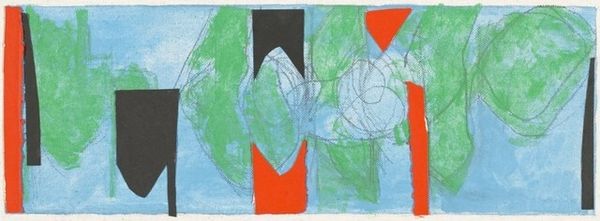
Dimensions: image (approx.): 49.53 × 41.28 cm (19 1/2 × 16 1/4 in.)
Copyright: National Gallery of Art: CC0 1.0
Editor: So, this is George Bunker's "Garden Motif" from around 1963, a mixed-media piece using acrylic and other drawing materials. I find the composition really interesting—almost like looking through fragmented memories of a garden. What do you see in this piece? Curator: I see an engagement with the artistic climate of the early 1960s. Bunker appears to be working within, but also pushing against, the boundaries of Abstract Expressionism. The geometric shapes are reminiscent of landscapes, but it is fragmented as you say. Editor: How does it fit into the broader art world at the time? Curator: Well, it's important to remember that this period saw a reaction against the highly emotional, gestural style of Abstract Expressionism. Artists were exploring new ways of representing the world, often incorporating geometric forms and a more detached aesthetic. You might see the influence of movements like Art Informel here as well. Notice also how landscape as a tradition figures in 19th century French Post-impressionism. Editor: It's like he's pulling apart the idea of a garden, reconstructing it. Curator: Precisely. And what do these reconstructions *do* to our understanding or expectations of what landscape and memory should do, formally or conceptually? Perhaps this resonates to modern, Post-war and Post-Holocaust sensibility, a way of coping by deliberately shattering traditional themes, re-arranging a landscape through memory, creating the 'motif' of a garden? It's definitely work wrestling with larger social, political, even psychological issues through abstracted art imagery. Editor: That gives me a new way to appreciate it. I thought it was just abstract, but I see the depth of the reference now. Curator: Art never exists in a vacuum. Examining how a piece interacts with its time reveals fascinating dimensions. This painting makes you consider how we shape and reshape our experiences. Editor: I hadn’t considered it in that way at all. It’s really opened my eyes.
Comments
No comments
Be the first to comment and join the conversation on the ultimate creative platform.
